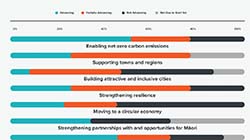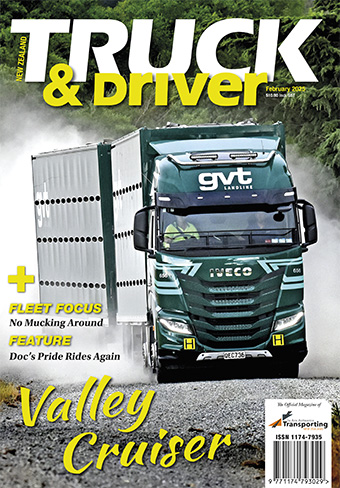
Good progress for NZ Infrastructure report says
Posted: 10-May-2024 |
The New Zealand Infrastructure Commission, Te Waihanga, has published a monitoring report looking at progress against New Zealand’s first Infrastructure Strategy.
"We’re seeing some good progress against the Strategy’s objectives, including a focus on enhancing the resilience of critical infrastructure. Other progress includes revisions to standard construction contract (NZS 3910) to improve risk allocation and modernise key provisions, Treasury’s measures to strengthen Quarterly Investment Reporting for central government agencies, and the uptake of water metering in some urban areas, which can help manage demand. But there are still many areas where there’s room for us to do better," says Ross Copland, Chief Executive, Te Waihanga.
The New Zealand Infrastructure Strategy, Rautaki Hanganga o Aotearoa, was published in May 2022 and sets a pathway to transform New Zealand’s infrastructure over the next 30 years. The Strategy includes 68 recommendations that are centred on 11 key objectives and themes, ranging from enabling a net-zero carbon emissions economy and supporting the growth of our regions and cities, to strengthening resilience of critical infrastructure, and boosting productivity of the construction sector. Government agencies and others were canvassed to evaluate progress against these recommendations.
"Since the Strategy was published we’ve faced a lot as a country, including severe weather events, significant construction cost inflation, and supply chain disruption. Despite those challenges over half of the 68 recommendations are either advancing or partially advancing.
"Overall, infrastructure is becoming more expensive to build and maintain. There is an opportunity to improve the efficiency of our capital investment and maximising the value of our existing assets requires greater focus," says Copland.
"That includes finding ways to manage peak demand, such as congestion charging on our roads. Removing the legislative barriers to congestion charging remains a priority, so that Auckland and other cities have access to this powerful demand management tool. We are very pleased to see the Government has expressed strong support for time-of-use pricing and is making progress on reviewing the transport revenue system.
"Another bright spot is the amount of renewable energy generation being consented. While it’s hard to know how much of this was a market response to high wholesale electricity prices and how much was due to the COVID-19 fast-track rules, the good news is generation projects consented almost doubled relative to the previous year," says Copland.
"Many of the infrastructure challenges we face have been decades in the making, so we know that some of the changes required will take time and additional planning. In recognition of the long-lived nature of infrastructure, the Government has asked Te Waihanga to develop a 30-year National Infrastructure Plan that aims to build enduring national consensus on the future of New Zealand’s infrastructure system," says Copland.
"Monitoring progress against the Strategy will help us in the development of this National Infrastructure Plan, as well as providing advice and information to decision-makers, central and local government and the wider infrastructure sector to support improved infrastructure delivery and services."




 + EQUIPMENT GUIDE - FREE
+ EQUIPMENT GUIDE - FREE
